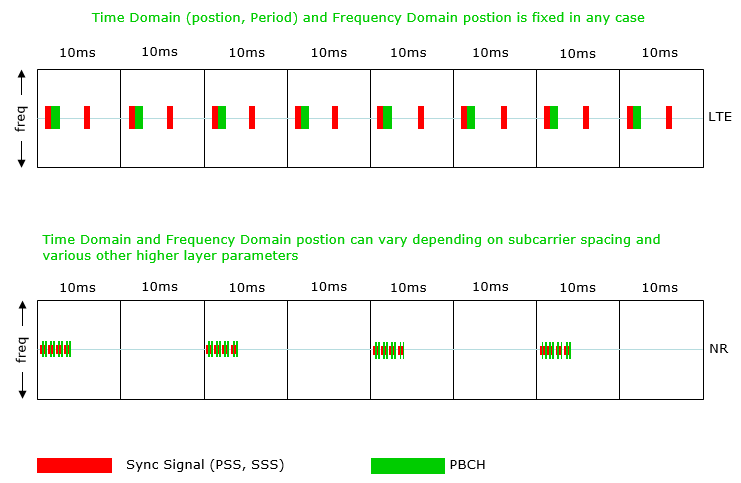What is RNTI?
In 5G networks, each UE (User Equipment) needs to be uniquely identified for both signaling and data transmissions. The RNTI (Radio Network Temporary Identifier) is used for this purpose. It’s a temporary, dynamic identifier that helps the network distinguish between UEs and manage resource allocation, scheduling, and communication over the radio interface.
Key Points:
- Temporary: RNTI is assigned temporarily during an active session and can be released or reassigned as needed.
- Efficient Communication: RNTI helps the gNB manage different users, messages, and services efficiently.
- Scalability: Supports a wide range of users and services in dense 5G environments, ensuring network scalability.
2. Types of RNTIs in 5G
There are several different types of RNTIs in 5G, each serving a specific purpose in the network for various control and data functions.
2.1. SI-RNTI (System Information RNTI)
- Purpose: Used to transmit system information to all UEs.
- Usage: This RNTI is used when the gNB broadcasts system information blocks (SIBs) to all UEs in the network. All UEs use the same SI-RNTI to access system information.
- Scope: Broadcast over the network, not unique to a specific UE.
2.2. P-RNTI (Paging RNTI)
- Purpose: Used for paging UEs that are in idle or inactive mode.
- Usage: When the network needs to contact a UE that is in idle mode, it uses the P-RNTI to broadcast a paging message. This message will inform the UE to reestablish a connection with the network.
- Scope: Broadcasted across the cell, not unique to one UE.
2.3. C-RNTI (Cell RNTI)
- Purpose: A unique identifier used for UE-specific communications.
- Usage: C-RNTI is assigned to a UE when it is connected to a specific cell. It is used during dedicated communication between the UE and the network, such as during a connection for voice calls, data transmission, and control signaling.
- Scope: Unique to each UE in a specific cell. It ensures the UE can communicate without interference from others.
2.4. RA-RNTI (Random Access RNTI)
- Purpose: Facilitates the random access procedure.
- Usage: The UE uses the RA-RNTI during the Random Access (RA) procedure to initiate a connection with the gNB, such as when entering the network or switching between cells. RA-RNTI is generated based on the Random Access Occasion (RAO).
- Scope: Temporarily assigned during the RA process to a group of UEs using the same access occasion.
2.5. TC-RNTI (Temporary C-RNTI)
- Purpose: Assigned during the Random Access process to temporarily identify a UE.
- Usage: When the UE attempts a random access procedure (e.g., during a handover), it is assigned a TC-RNTI before the final C-RNTI is given. This helps maintain the communication session until a permanent identifier (C-RNTI) is allocated.
- Scope: Temporary identifier until the UE gets the final C-RNTI.
2.6. SP-CSI-RNTI (Semi-Persistent CSI-RNTI)
- Purpose: Used for scheduling CSI (Channel State Information) reporting.
- Usage: The SP-CSI-RNTI is used for UEs with semi-persistent CSI reporting, helping the network optimize resource allocation based on channel quality feedback.
- Scope: Assigned to UEs involved in semi-persistent scheduling scenarios.
2.7. TP-RNTI (Temporary Paging RNTI)
- Purpose: Used during the paging process when a paging message is sent to a specific group of UEs.
- Usage: TP-RNTI is used when multiple UEs share a paging occasion, helping to identify the UEs that should respond to the paging message.
- Scope: Shared by a group of UEs that are paged together.
2.8. CS-RNTI (Cell-Specific RNTI)
- Purpose: Used for UEs engaged in cell-specific communication for broadcast or multicast transmissions.
- Usage: Helps UEs that participate in multicast or broadcast services like multimedia streaming.
- Scope: Assigned to UEs based on cell-specific operations.
2.9. MBMS-RNTI (Multimedia Broadcast Multicast Service-RNTI)
- Purpose: Used for broadcast and multicast services (MBMS) in 5G networks.
- Usage: MBMS-RNTI is assigned to UEs that participate in multimedia broadcast services, such as video streaming to multiple users simultaneously.
- Scope: Assigned for a specific MBMS session.
3. Role of RNTI in Network Operations
RNTI plays a crucial role in ensuring that the 5G network can handle a large number of UEs efficiently. Here’s how RNTI contributes to 5G operations:
- Efficient Resource Management: By assigning unique identifiers (RNTIs) to different UEs and communication processes, the gNB can efficiently schedule resources and manage uplink and downlink traffic.
- Mobility Management: As UEs move between cells, RNTIs ensure that seamless handovers occur without drops in connectivity. For example, C-RNTI and TC-RNTI work together during handovers.
- Paging and Broadcast: Paging messages using P-RNTI and broadcasting system information using SI-RNTI are vital for UEs that are in idle mode or just entering the network.
- Collision Avoidance: In the Random Access procedure, RA-RNTI helps prevent collisions between UEs trying to access the network simultaneously.







